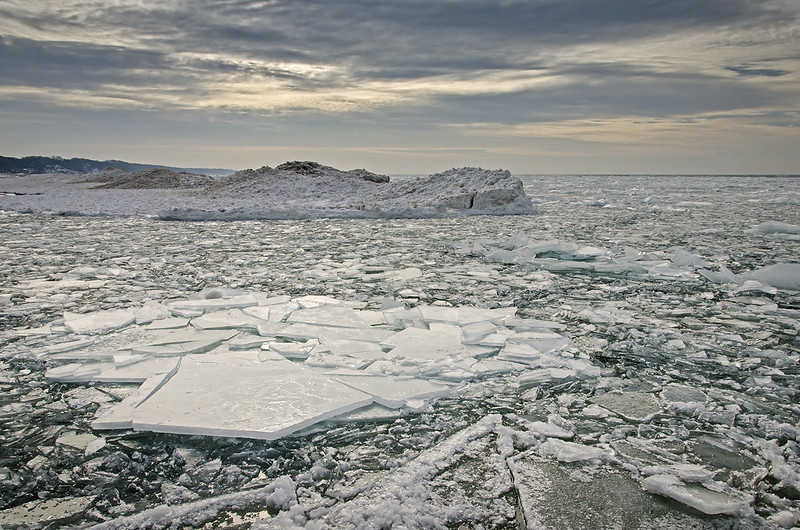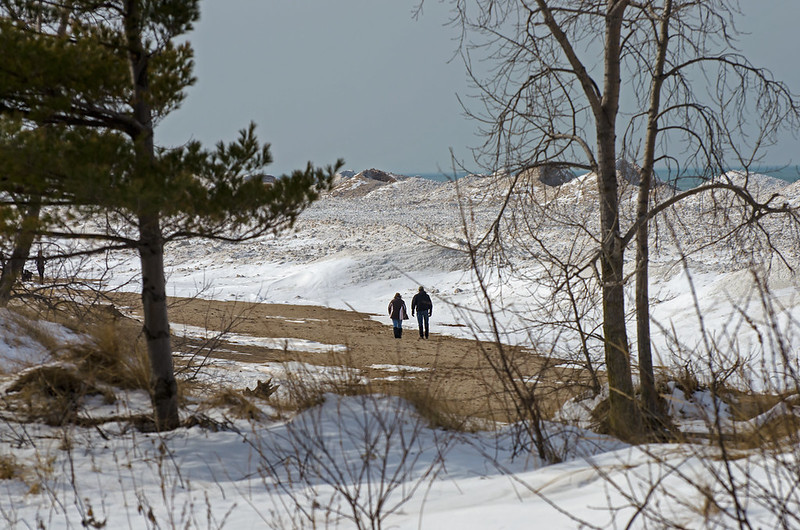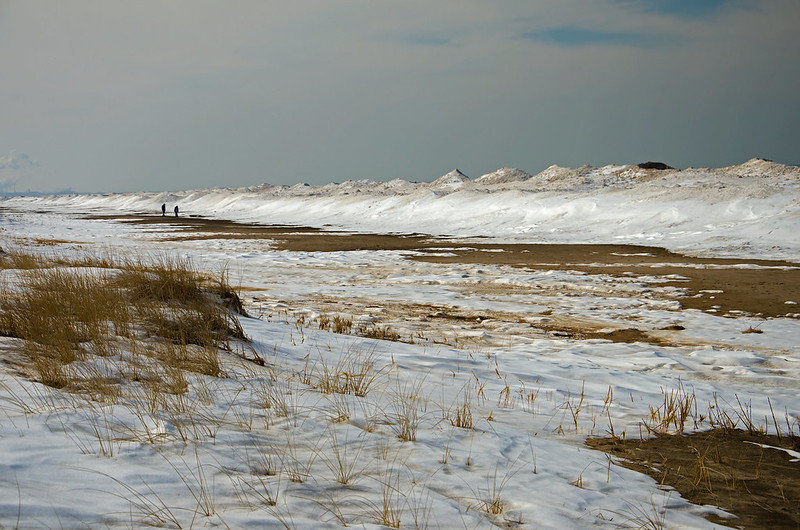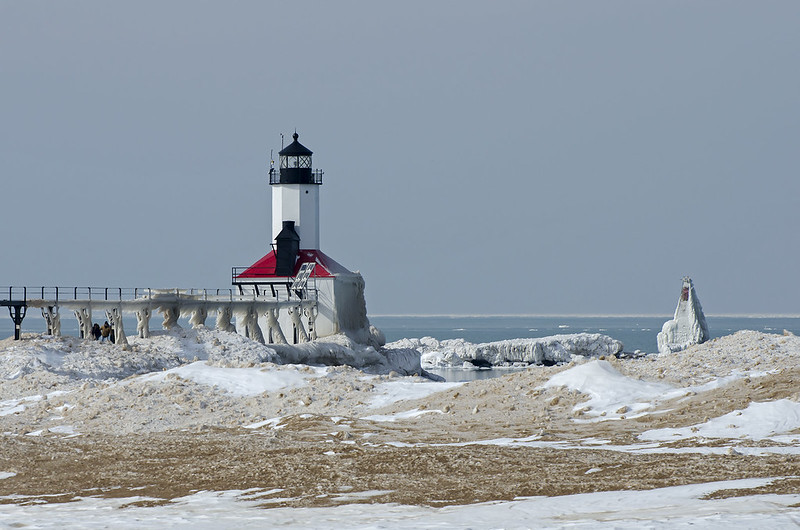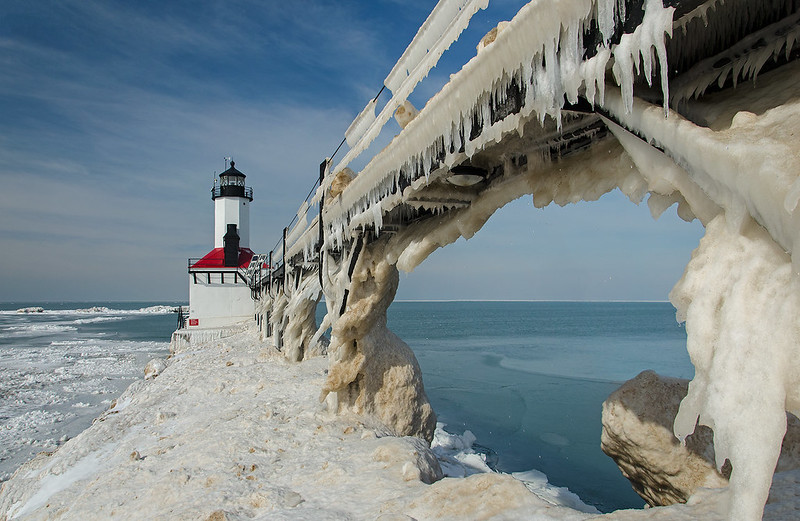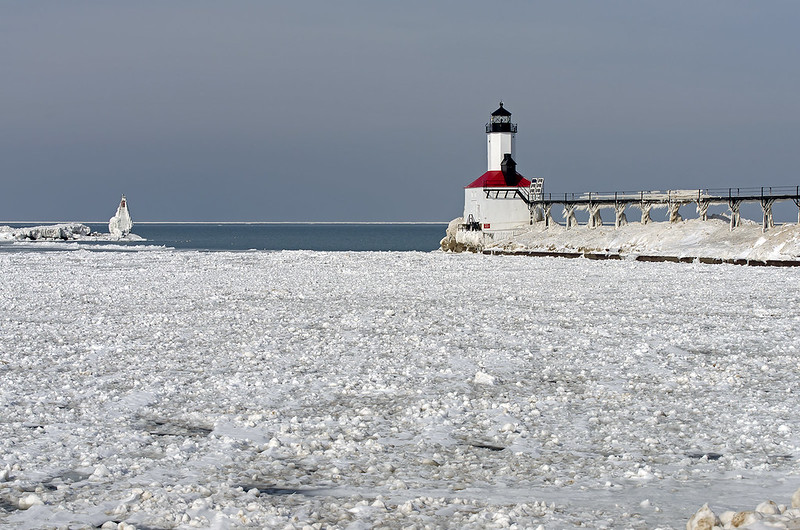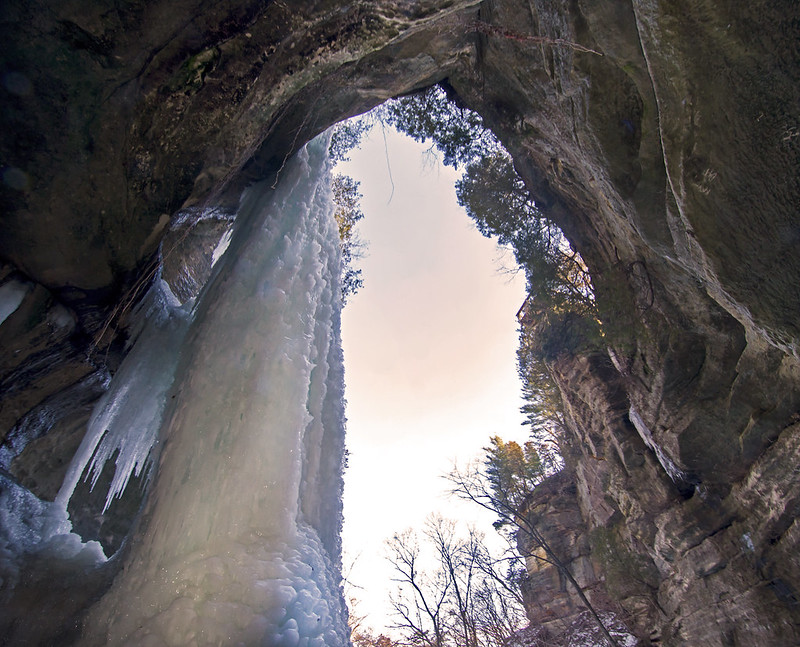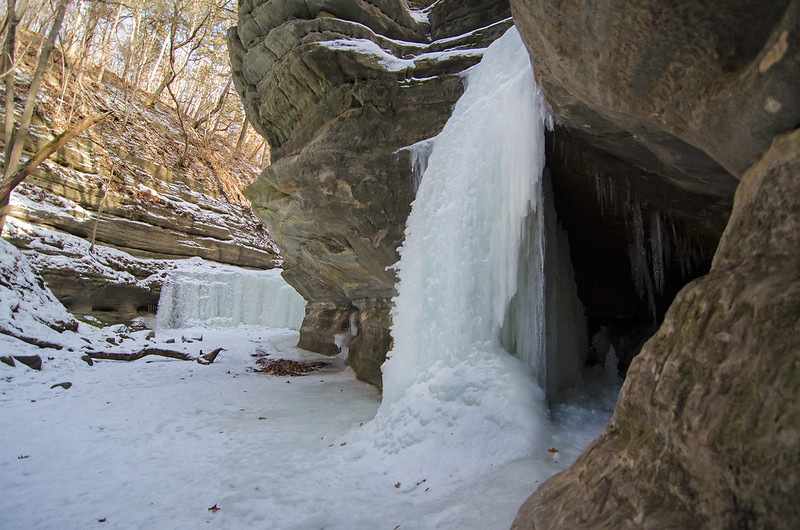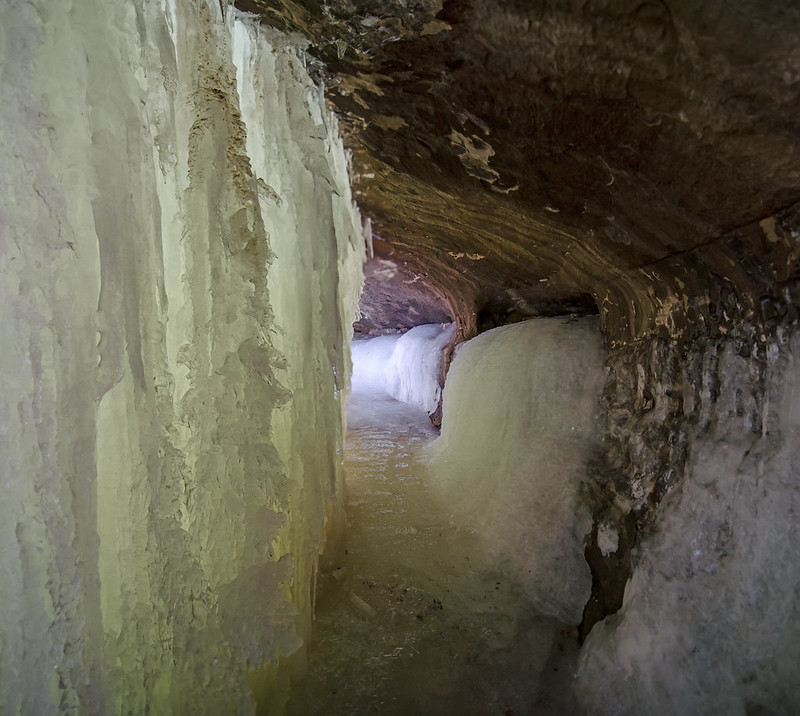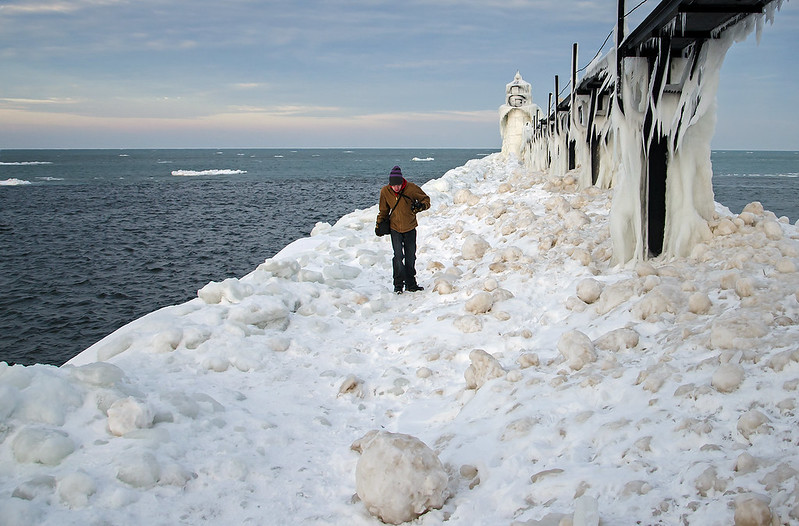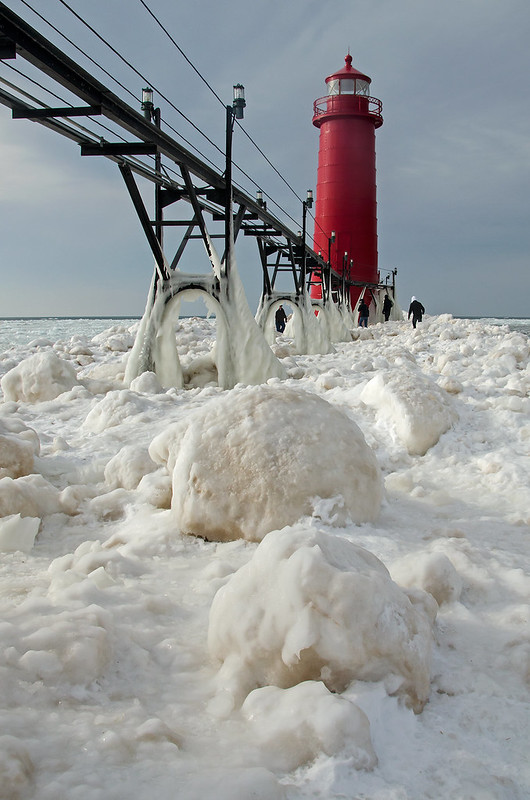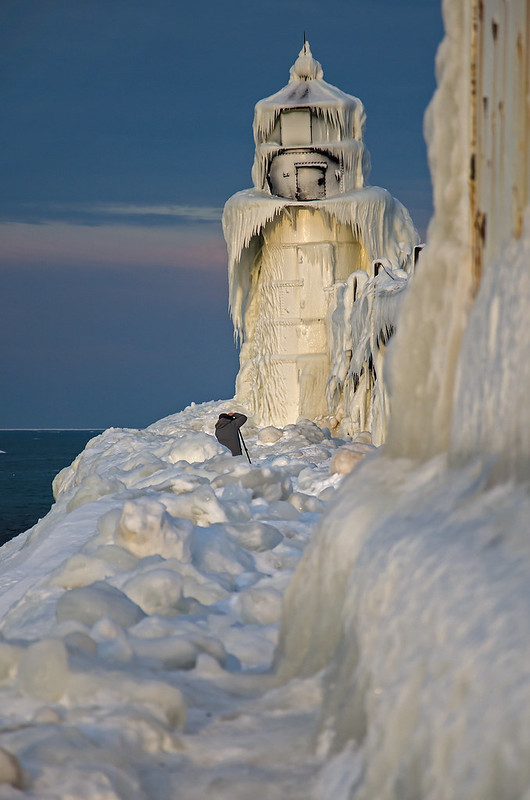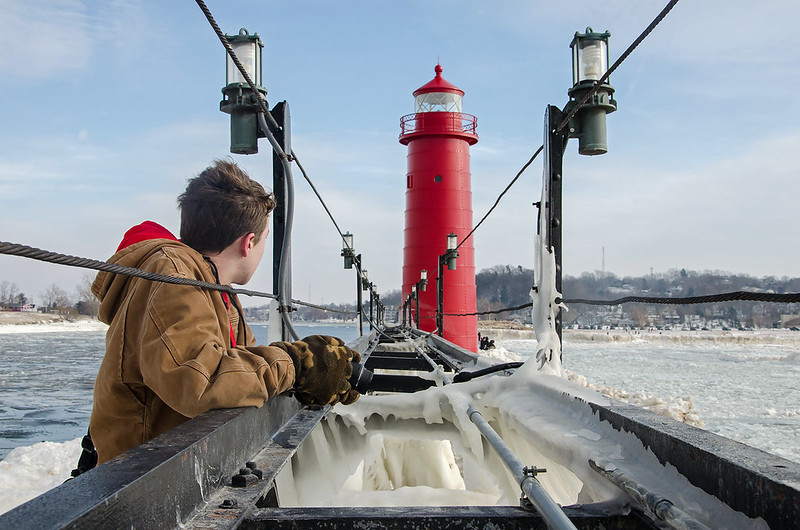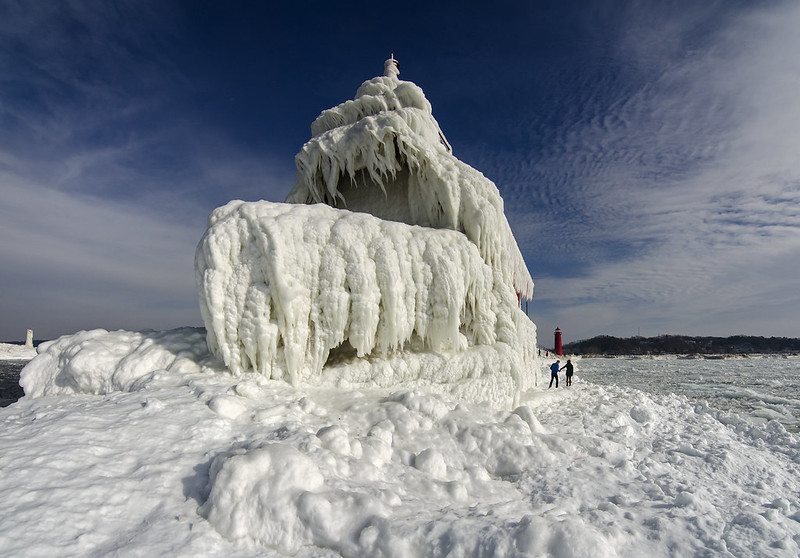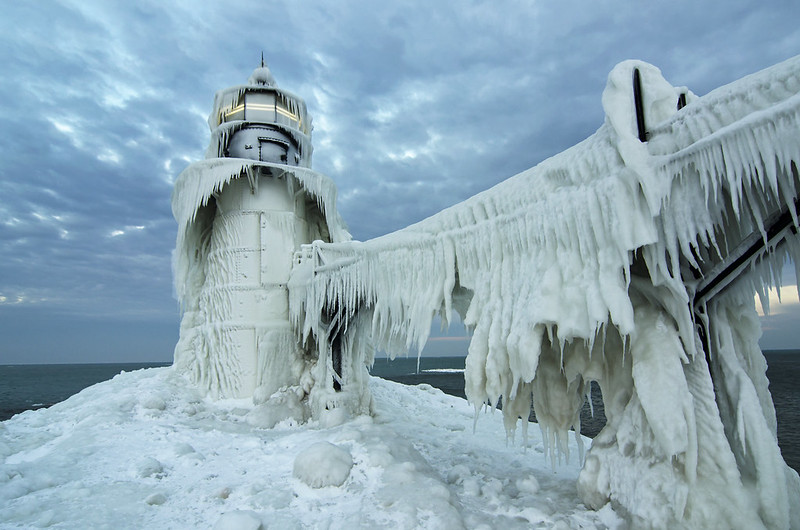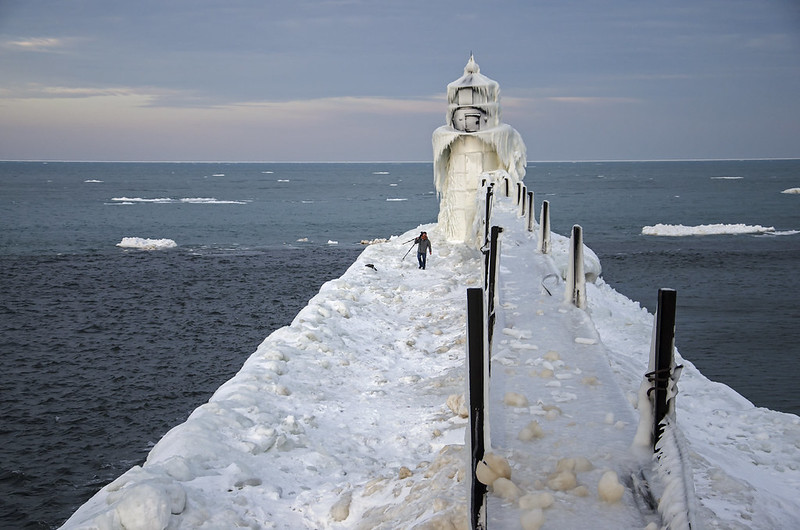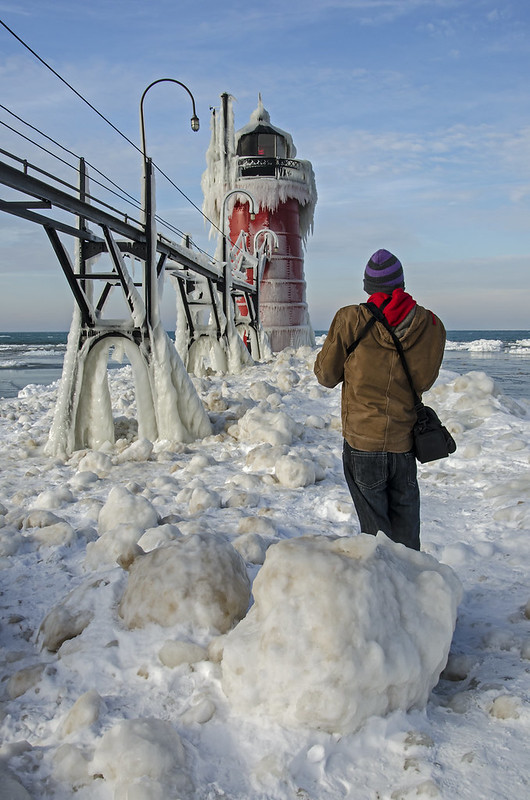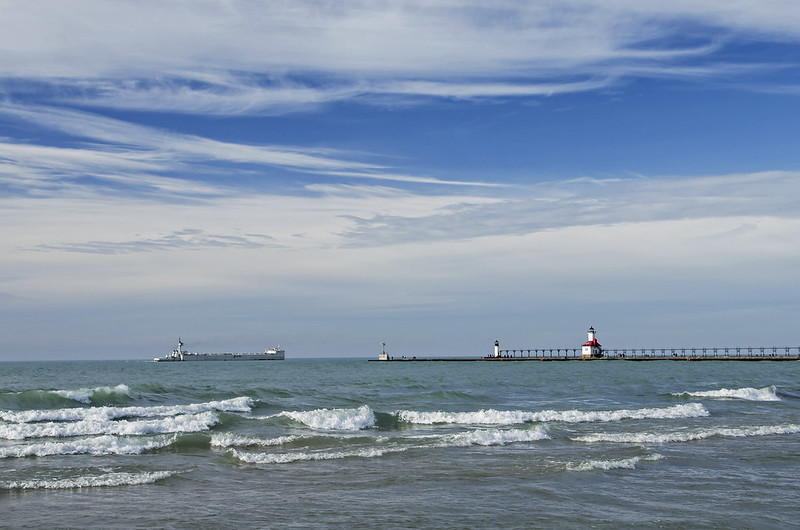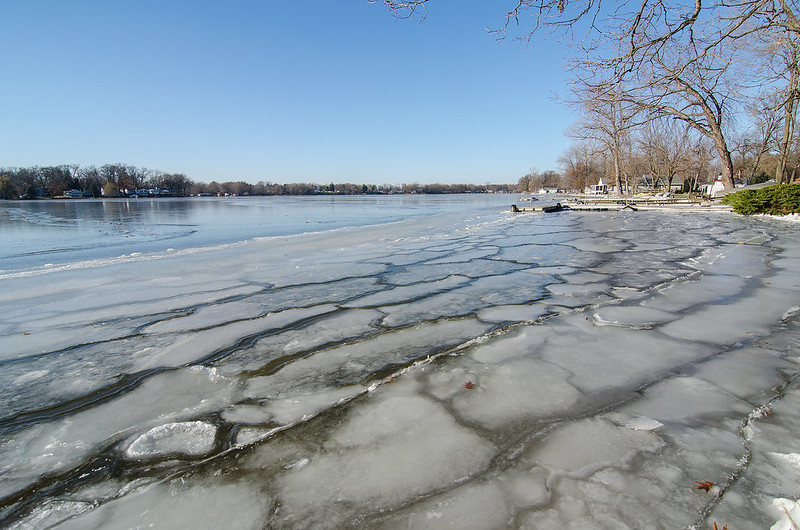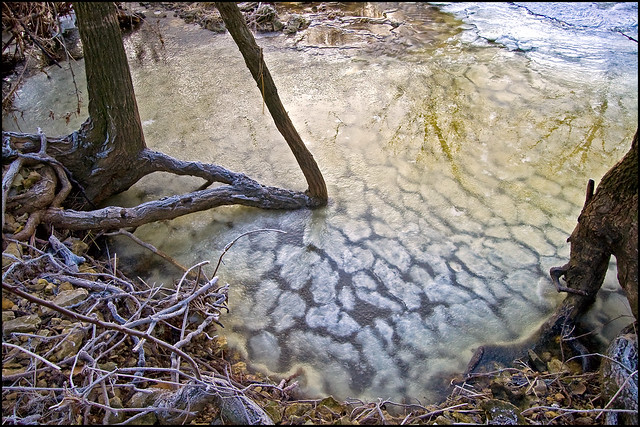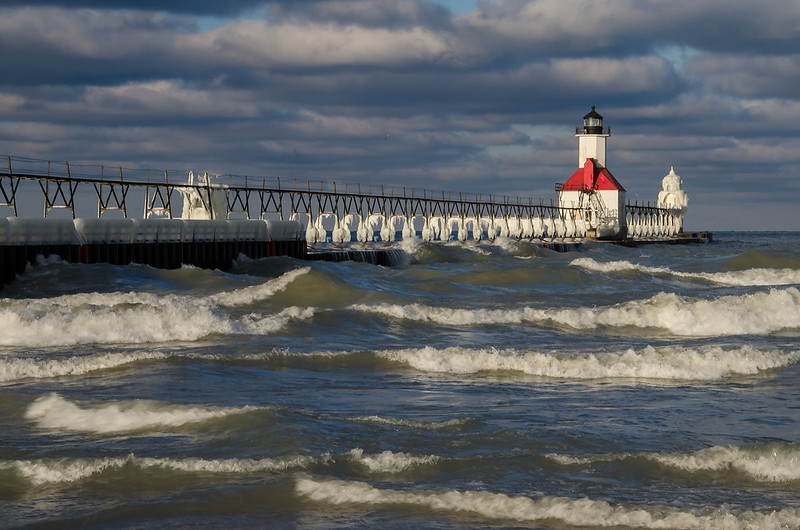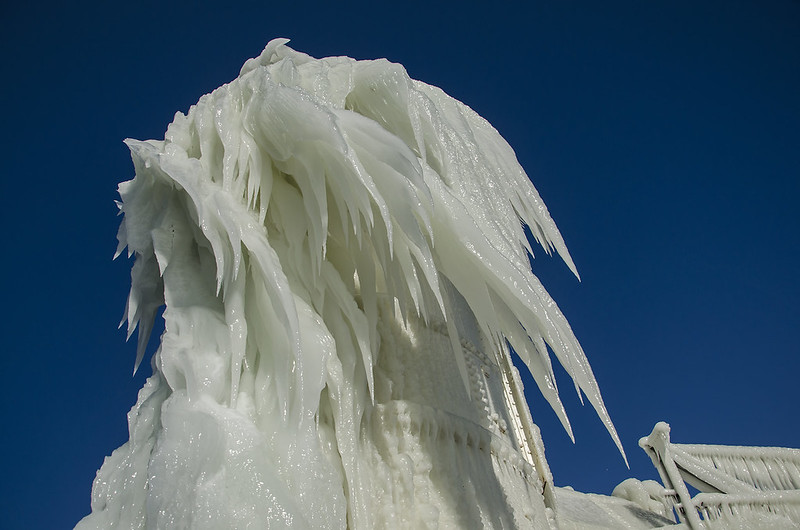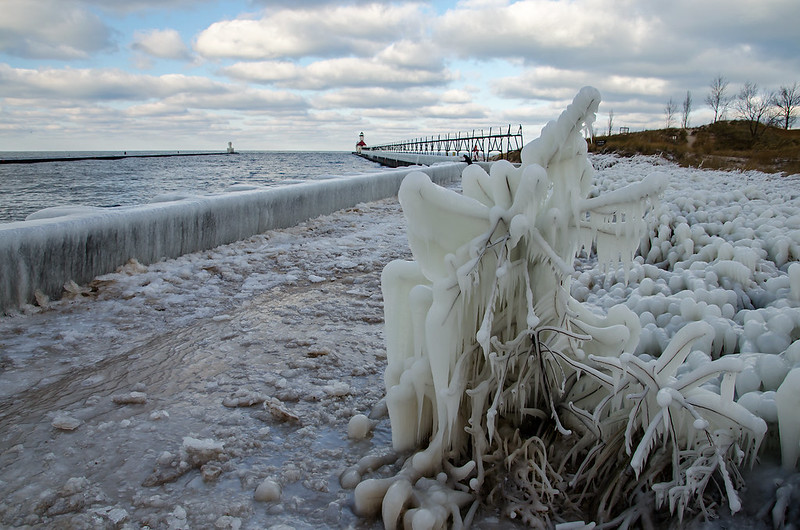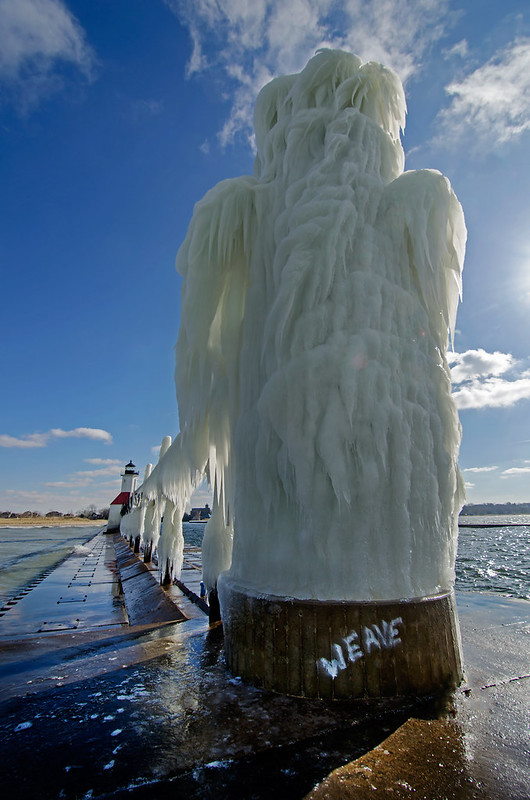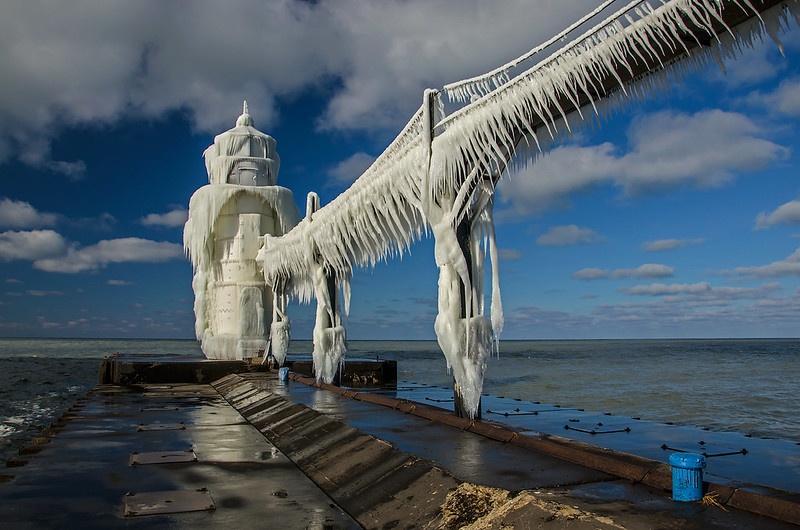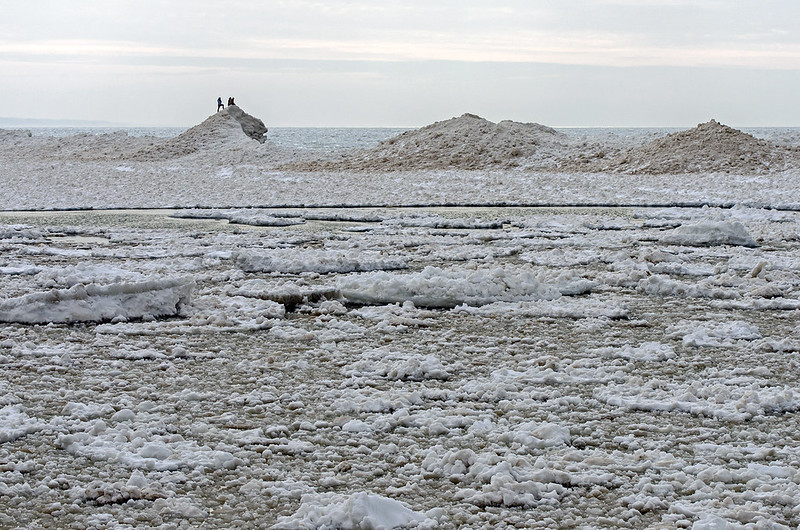
While on the pier at Grand Haven, Michigan, I noticed dozens of visitors walking on the shelf ice off shore of the public beach. These particular people, decided to walk as far as they could, and made it to the very edge of the shelf ice. Once there, they climbed the highest mound and stood on top, taking in the view.
Sounds like a great vantage point - probably was. But that walk could have easily ended in tragedy if one foot fell through the ice on the way out or the way back. Shelf ice is never safe to walk on. Cracks and faults in the ice lead directly to the freezing water below. The large mound can crack off of the rest of the ice shelf, and roll into the lake - taking everyone with it.
These people probably weren't aware of the danger, or simply figured they knew better. I watched as they made their way back to shore, expecting one to simply disappear at any moment. Luckily, they all returned safely.

